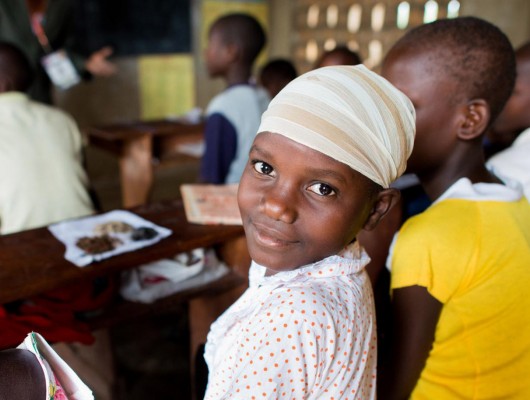Six Ways Education Empowers Women in Poverty
 Education empowers women and girls, and investing in their education is one of the most effective ways to reduce global poverty. Still, females face many barriers to educational opportunities. According to the Global Partnership for Education, 63 million girls are not in school worldwide, and women represent almost two-thirds of the world’s illiterate.
Education empowers women and girls, and investing in their education is one of the most effective ways to reduce global poverty. Still, females face many barriers to educational opportunities. According to the Global Partnership for Education, 63 million girls are not in school worldwide, and women represent almost two-thirds of the world’s illiterate.
A recent report by the World Bank found that girls who receive little to no amount of education are more likely to live in poverty, be married as children, suffer domestic abuse and lack control over their own health care decisions, which is detrimental to their families and communities.
Here are six of many ways education empowers women in poverty:
1. Education Helps Women Avoid Child Marriages
“Child marriage is an appalling violation of human rights and robs girls of their education, health and long-term prospects,” Babatunde Osotimehin, M.D., the Executive Director of the United Nations Population Fund, said to UNICEF. “A girl who is married as a child is one whose potential will not be fulfilled.”
Providing girls with access to educational can be an effective way to reduce child marriage rates worldwide. According to the United Nations Educational, Scientific and Cultural Organization (UNESCO), the rate of child marriage within sub-Sahara, South and West Africa would fall by 64 percent if every girl within the region received a secondary education level.
2. Education Empowers Women to Family Plan
The amount of education a woman receives influences a women’s choice and ability to plan family sizes. Family planning allows women to give birth to the number of children they desire and determine the spacing of their pregnancies.
In sub-Saharan Africa, women with no education have an average of 6.7 births on average, compared to 3.9 for women within the region who have obtained a secondary education level, as reported by UNESCO.
3. Education of Mothers Decreases Child Mortality
A woman’s education is integral to the health of her family. The more education a girl gains throughout her childhood, the better chance her future child has for survival.
According to the United States Agency for International Development (USAID), the probability of infant mortality decreases by five percent to 10 percent for each extra year of education a mother has.
Around four million child deaths have been prevented over the last four decades due to an increase in female education, according to a study in The Lancet journal funded by the Bill and Melinda Gates Foundation.
4. Education Increases the Likelihood of Women Surviving Pregnancy and Birth Complications
Education isn’t just integral to the health of a woman’s child; it is also important for the mother. Pregnancy and birth pose extreme health risks for women in poverty stricken areas, and education plays a significant role in helping mothers survive them. Women with higher levels of education are more likely to adopt simple and low cost hygienic practices throughout pregnancy, and react to health issues.
According to UNESCO, maternal mortality would fall by 66 percent if all women had completed primary education.
5. Education Gives Women Higher Income Earning Power
Each extra year of schooling a girl receives is incredibly valuable, raising her ability to enter the labor force. Every year of secondary school education a girl receives is directly correlated with an 18 percent increase in her future earning, according to a World Bank study.
6. Education Empowers Women to Stand Up to Domestic Violence
Gender-based violence is a global phenomenon. One-third of women who have been in a relationship have experienced physical or sexual violence, according to the World Health Organization (WHO). Low education levels are associated with an increased risk of experiencing domestic violence.
Through education, women have the opportunity to gain knowledge to stop this phenomenon. In Sierra Leonne after a large expansion of school opportunities, women’s tolerance of domestic violence dropped from 36 percent to 26 percent according to UNESCO.
“I firmly believe that when you invest in a girl’s education she will support herself and her children and contribute to her community and her nation, charting a path towards a better world in which human rights are respected and there is dignity for all,” Prime Minister of Norway and co-chair of the MDG Advocacy Group, Erna Solberg, said in an interview with Daily Development. “Education empowers women. It increases their economic contribution, strengthens their political voice and boosts their influence across the board. That is why delivering education to all girls is so vital.”
– Lauren Lewis
Sources: United Nations Development Program, UNESCO, White House, USAID, World Bank, The Lancet, Global Partnership for Education, UNICEF, World Health Organization, Daily Development
Photo: The Clinton Foundation
